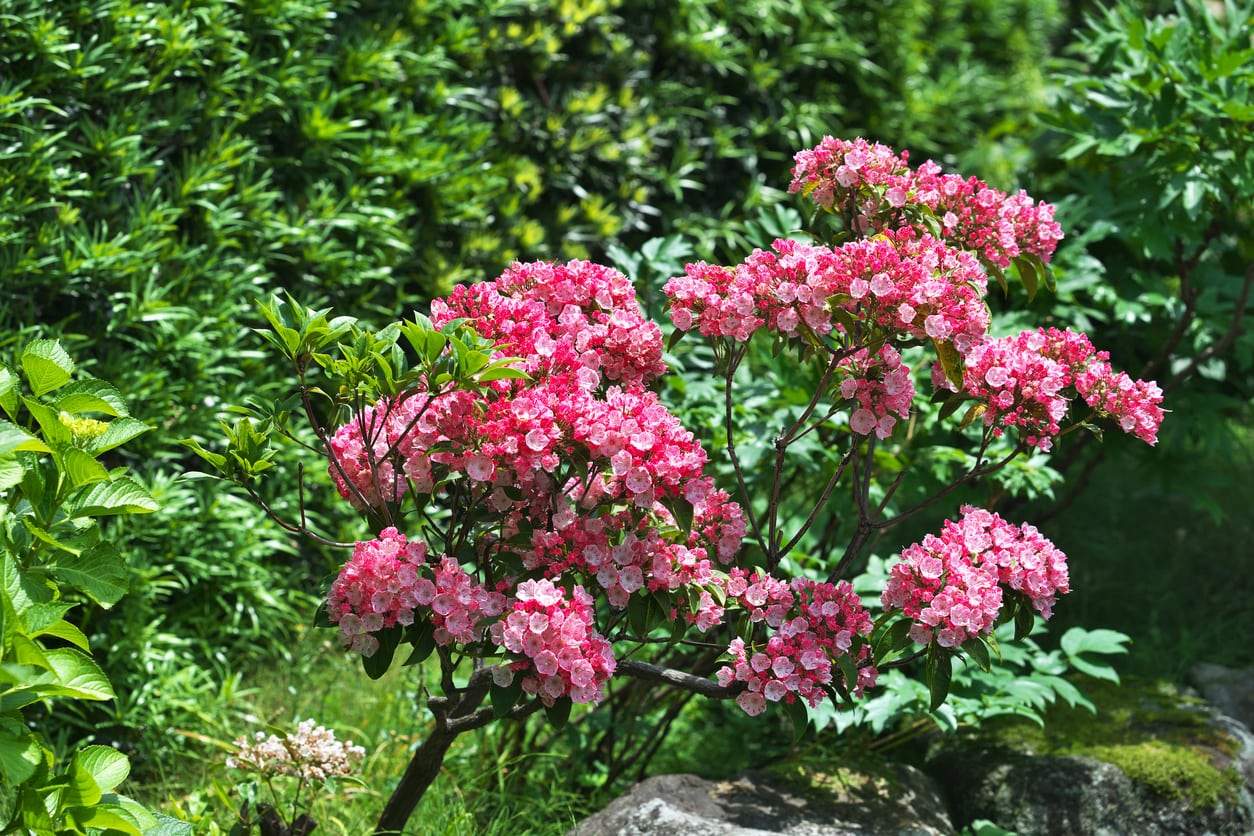Mountain Laurel Transplant Tips – How To Transplant Mountain Laurel Bushes

Mountain laurel (Kalmia latifolia) is a lovely medium sized evergreen bush that grows to around 8 feet (2.4 m.) in height. It is naturally an understory shrub and prefers partial shade, so if you have one in full sun, it’s time to think about transplanting your mountain laurel. If you follow some transplant guidelines, moving mountain laurel is a fairly easy task. So how do you transplant a mountain laurel? Read on for tips on how to move a mountain laurel in the landscape.
Moving Mountain Laurels
Mountain laurel, also known as calico bush or ivy-bush, makes a beautiful addition to the understory of a woodland garden or other partially shaded location. If you happen to have one in a sunny area, it likely will not survive and it’s time to move the mountain laurel. Mountain laurels are hardy to USDA zones 5-9. Like other evergreens, mountain laurels should be transplanted in the fall, from late August through late October (or late February to May in Southern Hemisphere). They grow up to 8 feet (2.4 m.) across and as wide, so if you have an existing mature plant you wish to move, you have some work ahead of you; work that might involve a crane to lift the plant out of its current location and then into a new home. Mountain laurels are a bit picky about where they grow. They need well-draining, moist, acidic soil chock full of organic matter. To add acid into the soil prior to transplanting a mountain laurel, amend the soil with plenty of peat moss.
How to Transplant Mountain Laurel
Mountain laurels have a bit of a reputation for being difficult to establish. This difficulty increases if you are moving a mature specimen; young plants tend to adapt more easily. Prior to transplanting a mountain laurel, dig a hole and amend it as above. Be sure to incorporate plenty of organic matter to increase mountain laurel transplant success. Move the mountain laurel, trying to keep as much of the original planting soil intact on the root ball as possible. Lower the plant into the amended hole and back fill with amended soil. Water the plant in well and continue to keep it consistently wet for the first year following the transplant. Then mulch around the root zone of the laurel with a ring of hardwood mulch or acidic pine needles. Be sure to keep the mulch away from the trunk of the laurel. If deer are prominent in your area, protect the mountain laurel with a spray deterrent or fence it off during the fall and winter months when lack of food sources invite deer to nibble on your laurel.
Sign up for the Gardening Know How newsletter today and receive a free copy of our e-book "How to Grow Delicious Tomatoes".

Amy Grant has been gardening for 30 years and writing for 15. A professional chef and caterer, Amy's area of expertise is culinary gardening.
